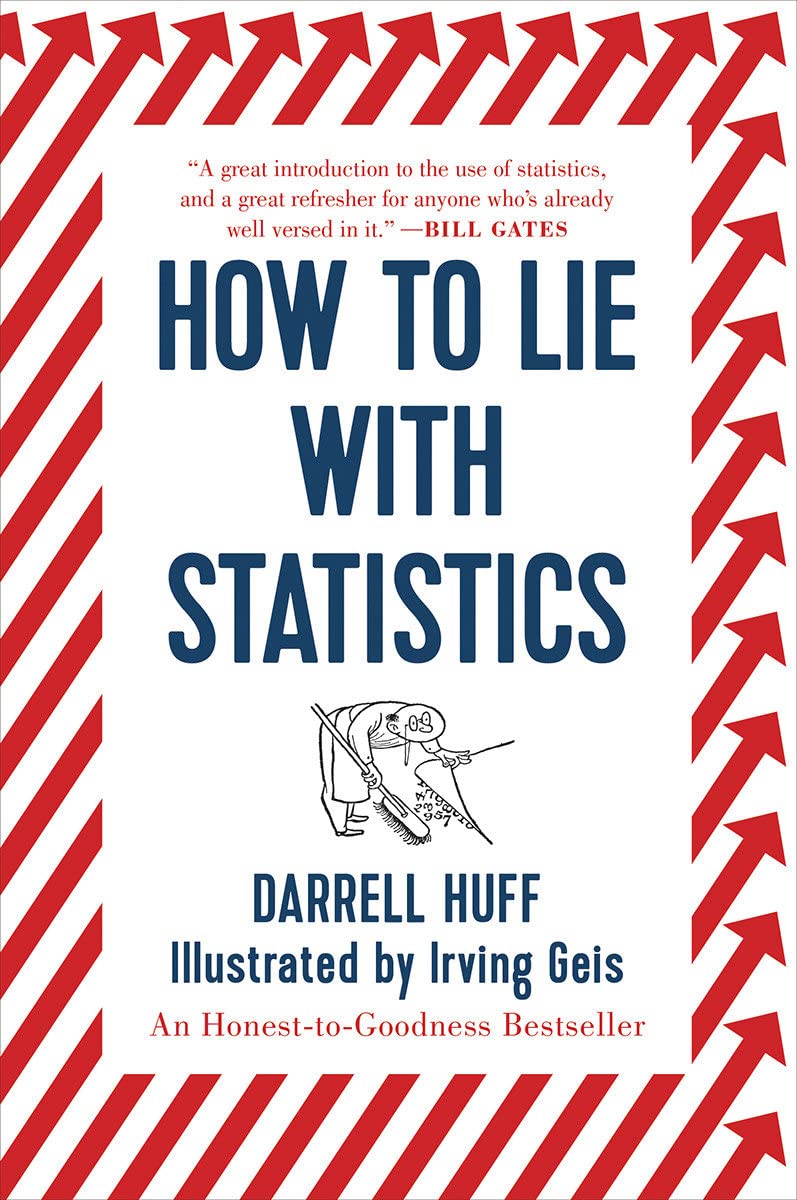If you can’t prove what you want to prove, demonstrate something else and pretend that they are the same thing. In the daze that follows the collision of statistics with the human mind, hardly anybody will notice the difference. The semiattached figure is a device guaranteed to stand you in good stead. It always has.
You can’t prove that your nostrum cures colds, but you can publish (in large type) a sworn laboratory report that half an ounce of the stuff killed 31,108 germs in a test tube in eleven seconds. While you are about it, make sure that the laboratory is reputable or has an impressive name. Reproduce the report in full. Photograph a doctor-type model in white clothes and put his picture alongside. But don’t mention the several gimmicks in your story.
It is not up to you—is it?—to point out that an antiseptic that works well in a test tube may not perform in the human throat, especially after it has been diluted according to instructions to keep it from burning throat tissue. Don’t confuse the issue by telling what kind of germ you killed. Who knows what germ causes colds, particularly since it probably isn’t a germ at all?
In fact, there is no known connection between assorted germs in a test tube and the whatever-it-is that produces colds, but people aren’t going to reason that sharply, especially while sniffling.
Maybe that one is too obvious, and people are beginning to catch on, although it would not appear so from the advertising pages.

Huff, Demonstrate something else
Huff, Darrell. How to Lie with Statistics. New York: W.W. Norton, 1993.
Hits: 1218
Latest
- Giving a Voice to the Past: Intangible Heritage and Forgotten Territories 25 October 2025
- Donner une voix au passé : patrimoines immatériels et territoires oubliés 25 October 2025
- Tra overtourism e undertourism: la ricerca di equilibri territoriali sostenibili 21 June 2025
- Overtourism and Undertourism: The Challenge of Managing Contemporary Tourism 21 June 2025
- Overtourism et undertourism : le défi de la gestion du tourisme contemporain 21 June 2025
Most read
- Le alterazioni dell’ecosistema
- Le tourisme urbain
- La théorie du cycle d'erosion et critique du modèle davisien
- Gestione del comprensorio montano del Ceresio (InterReg II)
- Strumenti e strategie per la condivisione e la valorizzazione dei patrimoni culturali ticinesi, Convegno Digitalizza la cultura
- Globetrotter: un nuovo modo di viaggiare
- Un museo per viaggiatori e avventurieri d'inizio secolo

Osare: il progresso si ottiene solo così.
Oser: le progrès est à ce prix.
To dare; that is the price of progress.
Victor Hugo, Les Misérables
